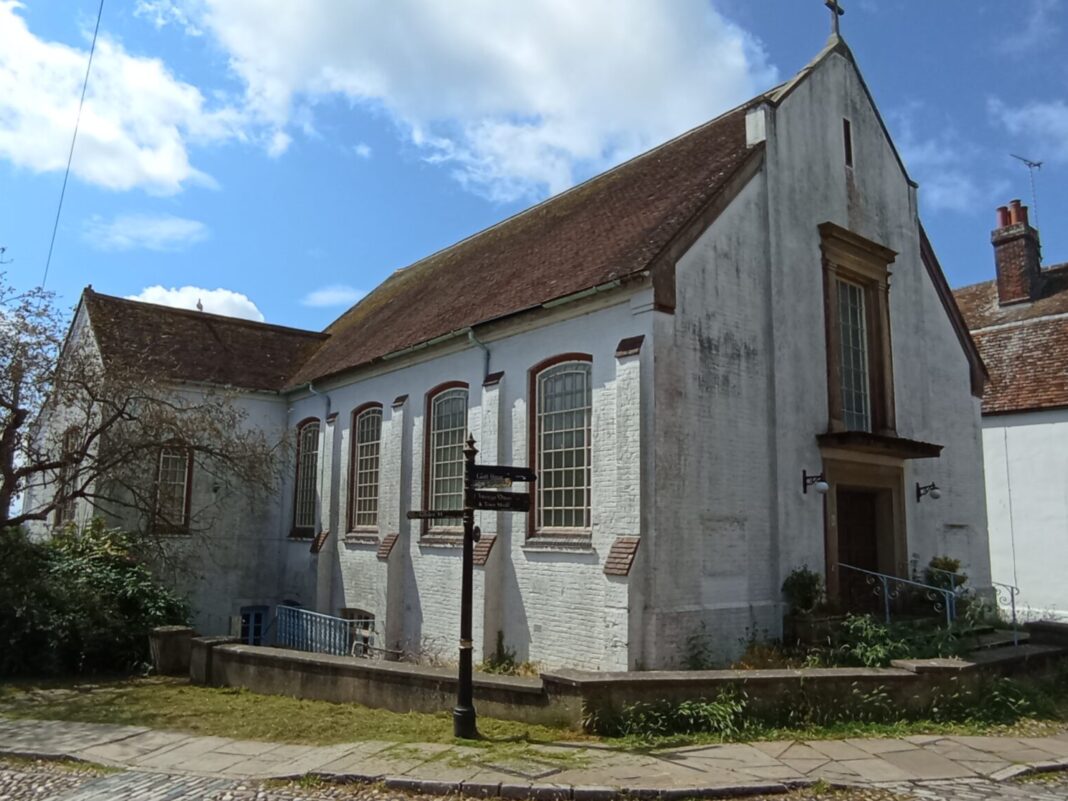Do all the good you can.
Methodism was introduced in 1730 by John and Charles Wesley. It focuses on sanctification and the effect of faith on a Christian character. They became known as Methodists because of “the methodical way in which they carried out their Christian faith.” It is perhaps John Wesley who is most remembered. He was born on June 28 1703 at the rectory of Epworth, Lincolnshire, the 15th child of the 19 that his parents had. (His mother was one of 25 children). His father was the local vicar. At the age of five, on February 9 1709, there occurred an event that changed his life. In the early hours of the morning a fire broke out in the rectory. All the family except young John managed to escape, but he was trapped. The roof was ablaze and the stairs had collapsed. He seemed doomed to die. He was saved, however, by a man standing on the shoulders of another, and plucked to safety through his bedroom window. Later, he felt that God had saved him for a reason, and called himself, “a brand plucked out of the fire”. This referenced the Old Testament Book of Jeremiah, 36:1-32.
Methodism came to Rye in 1756 with Thomas Mitchell, an itinerant preacher who had been preaching in villages between Rye and Hawkhurst. He was attacked and badly beaten for his non-conformist views in Hawkhurst. Not for nothing was he called “one of the bravest” of the Methodist preachers. Mitchell wrote on his arrival in Rye that it was a place “where no Methodist ever preached before”. He seems to have been well received, for Wesley himself arrived to preach in October of 1758, the first of eleven visits. Rye was named as head of the Sussex Circuit in 1759. Mitchell moved on from Rye in 1760 and was replaced by John Martin. He only stayed for about a year and was followed by Thomas Rankin in 1761.
Wesley seems to have always visited between October and January, generally staying with the Holman family at Cadborough House in Udimore Road. There are no records of where the early Rye Methodists met, but in 1770 they moved into the old Presbyterian chapel in Mermaid Street. A new chapel was built near to the Gun Garden and opened by Wesley himself on his 1789 visit. He wrote in his diary: “At the earnest importunity of our friends, on Wednesday 28th I went to open the new preaching-house at Rye. It is a noble building, much loftier than most of our houses, and finely situated at the head of the town.”
Wesley’s most famous saying was: “Do all the good you can, by all the means you can, in all the ways you can, at all the times you can, to all the people you can, as long as ever you can.” He certainly lived by that maxim. He lived simply, on £30 a year. It is said that over the course of his life he gave away about £30,000, a tremendous sum. He rode about 250,000 miles in his life and preached more than 40,000 sermons.
John Wesley first visited Winchelsea in 1771, arriving on foot and preaching to “a considerable number of serious people”. He very much impressed the locals who formed their own Wesleyan Society in 1774. They built their Preaching House, known as Evens’ Chapel, in 1785. Wesley preached from the pulpit there in 1789. He returned on October 7 1790. So many wanted to hear him preach that the chapel was unable to hold them all. The Rector of Winchelsea refused permission for him to speak in the parish church, so instead he spoke under an ash tree in German Street, almost opposite the New Inn. He wrote: “I stood under a large tree and called to most of the inhabitants of the town, ‘the kingdom of God is at hand: repent and believe in the Gospel’. It seemed as if all that heard were, at the present, almost persuaded to be Christians.” This turned out to be Wesley’s last outdoor sermon, for he died in March 1791 aged 87. The ash tree became known as Wesley’s Tree. It fell down in 1927, but in 1931 a cutting from it was planted in the same place. A memorial meeting is held under it each year.
A Sunday school opened in Rye in 1813, funded by the philanthropist and cleric Robert Raikes. It taught not just the scriptures but the three Rs: reading, writing and arithmetic. The chapel opened by Wesley and described by him as a “noble building” proved too small for the growing congregation, and was replaced in 1841.
Image Credits: Nick Forman .



